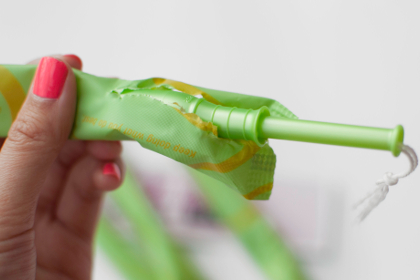
The Truth About Your Tampons
From deodorant and perfume to cleaning products, the chemicals we spread, spritz and spray onto our bodies and around our homes are a growing area of concern for health scientists.
July 27, 2016 | Source: Time | by Markham Heid
Some experts are worried about the chemicals and materials used to make feminine hygiene products.
From deodorant and perfume to cleaning products, the chemicals we spread, spritz and spray onto our bodies and around our homes are a growing area of concern for health scientists.
In particular, a group of chemicals sometimes referred to as “endocrine disrupters”—because they may mess with the hormones your body’s endocrine system regulates—have been linked to brain disorders, reproductive issues, obesity and cancer. (Recent reports from Europe pegged the healthcare costs of these chemicals somewhere north of $200 billion.)
Unfortunately, experts say tampons belong on this growing list of potentially hazardous personal care products.
Unlike something you swallow or rub on your skin, substances you place inside your vagina are not broken down by any of your body’s digestive or metabolic processes, says Ami Zota, an assistant professor of environmental health at George Washington University. Instead, tampon chemicals are absorbed by the vaginal mucosa, and from there are able to pass almost directly into your bloodstream.
Zota’s research shows fragranced feminine care products may raise a woman’s exposure to phthalates, a class of suspected endocrine disrupters some research has linked to developmental issues like lower IQs and higher rates of asthma.
